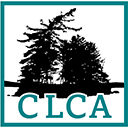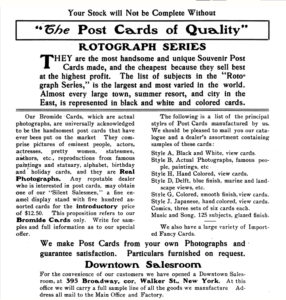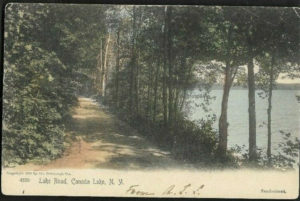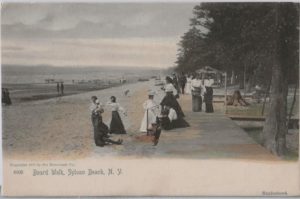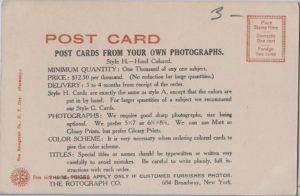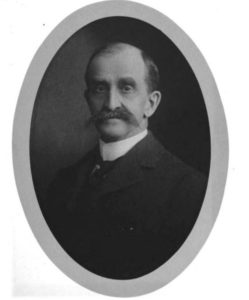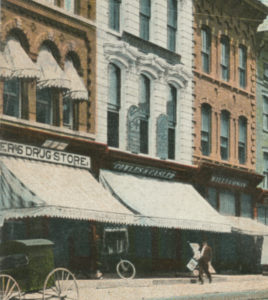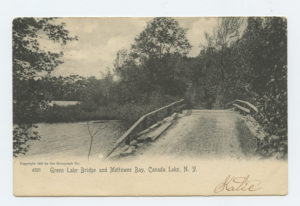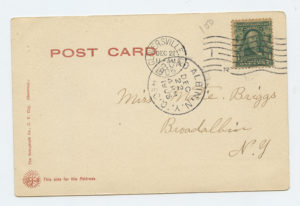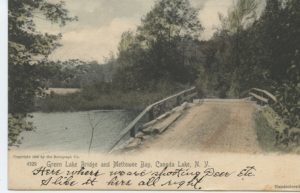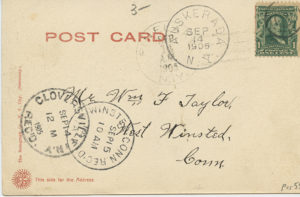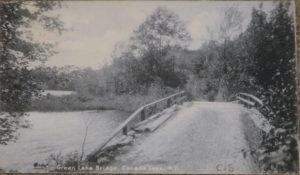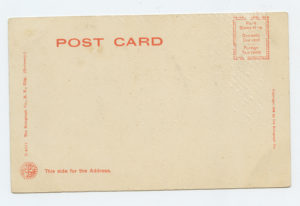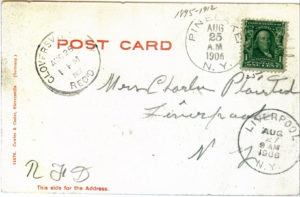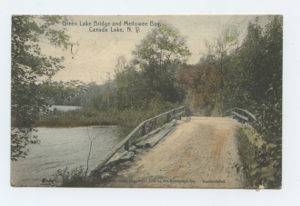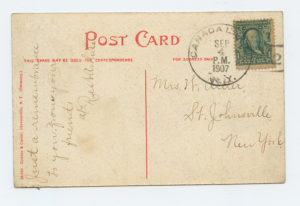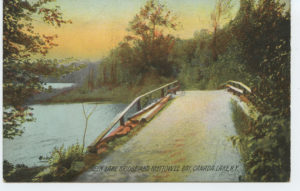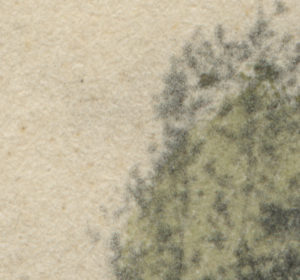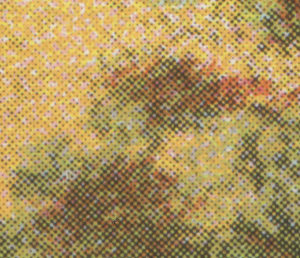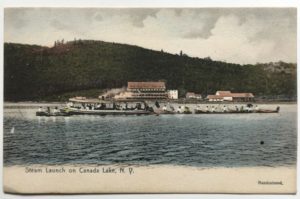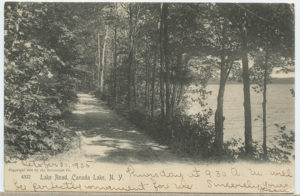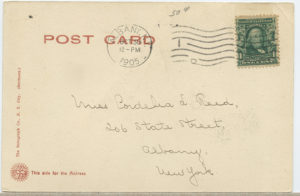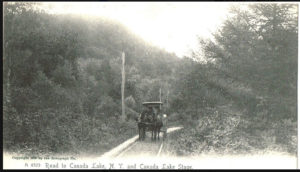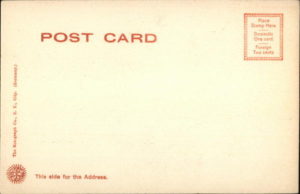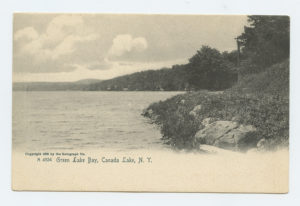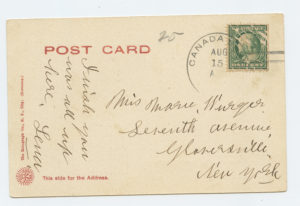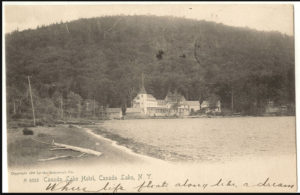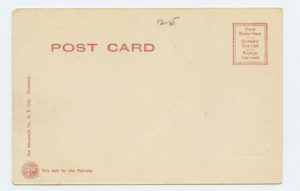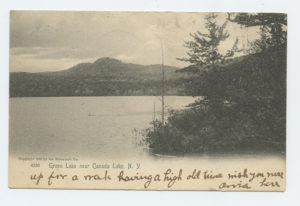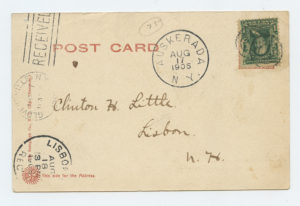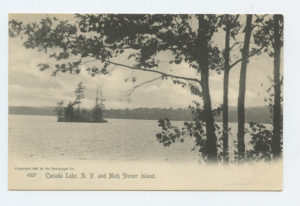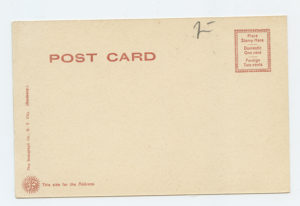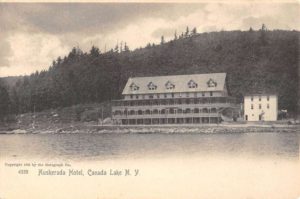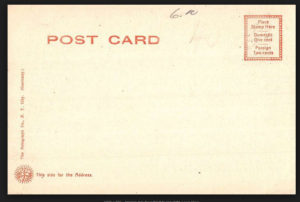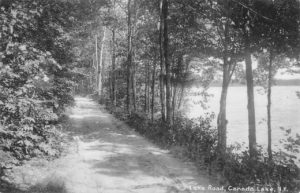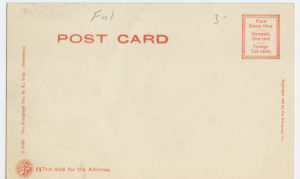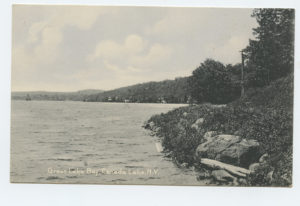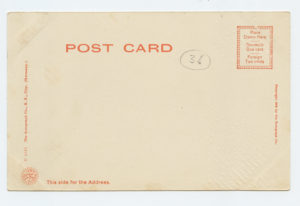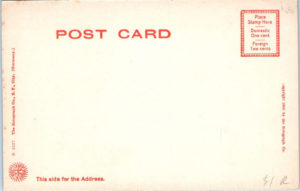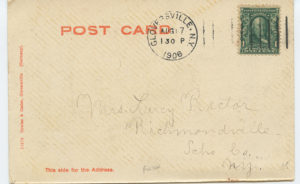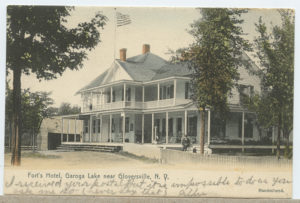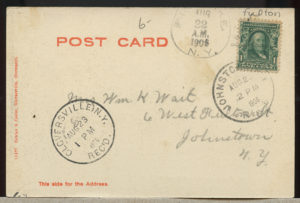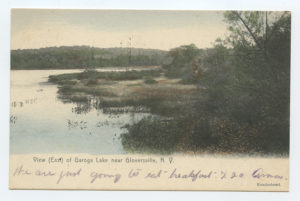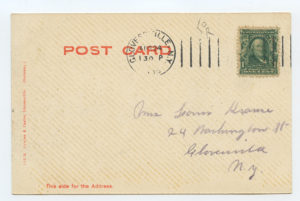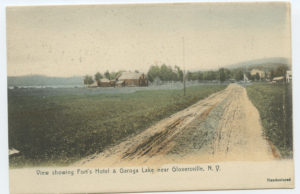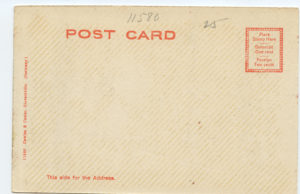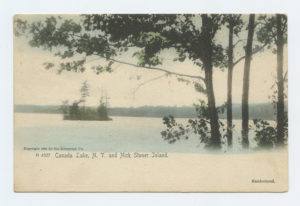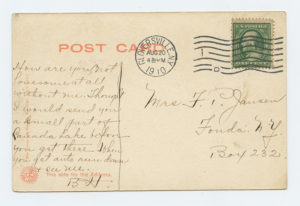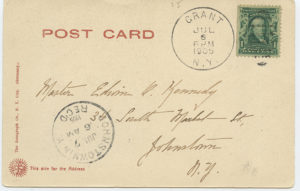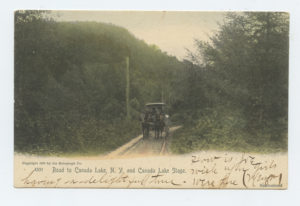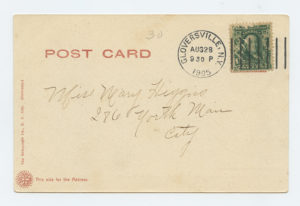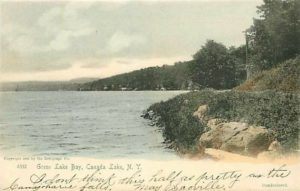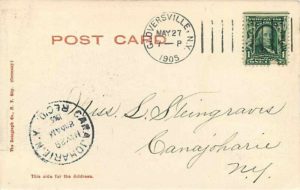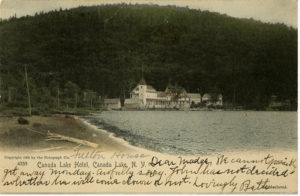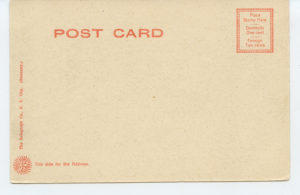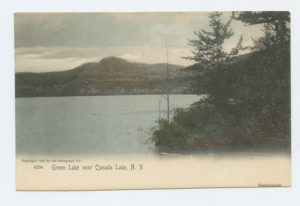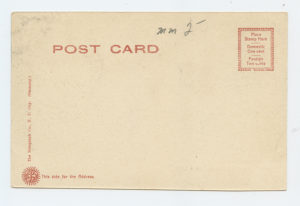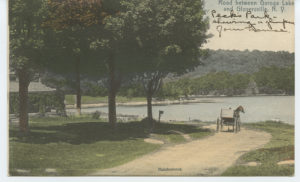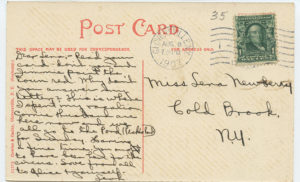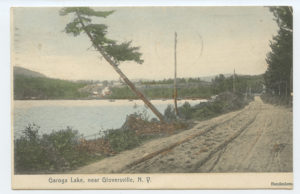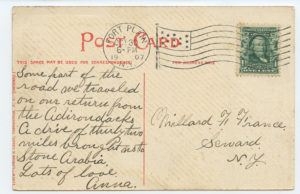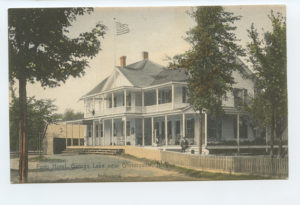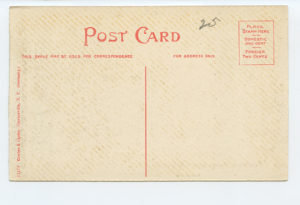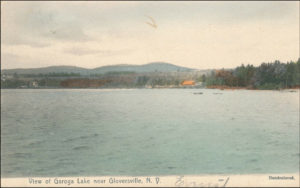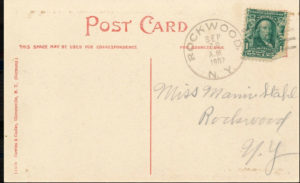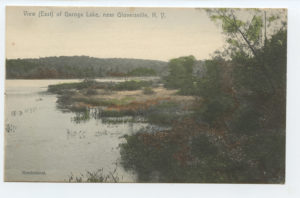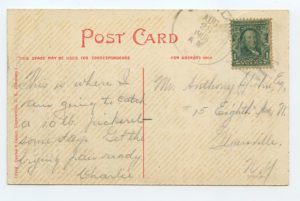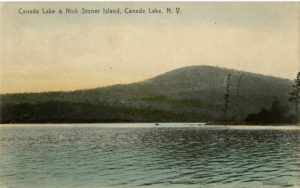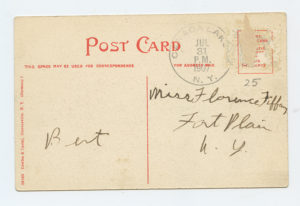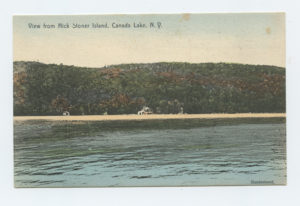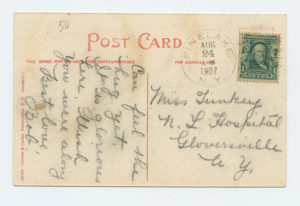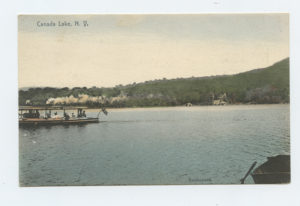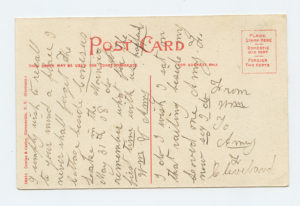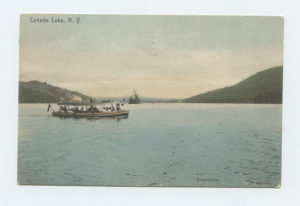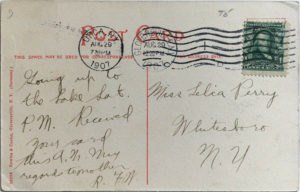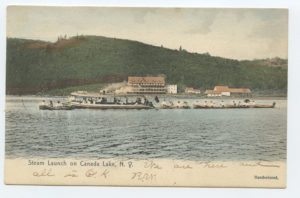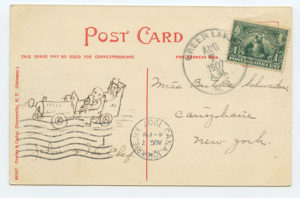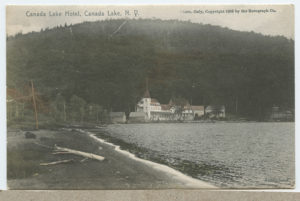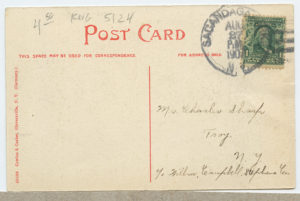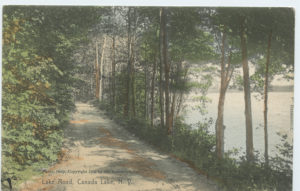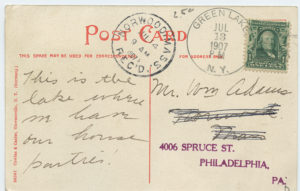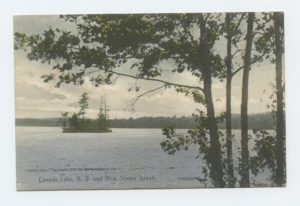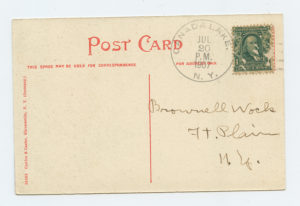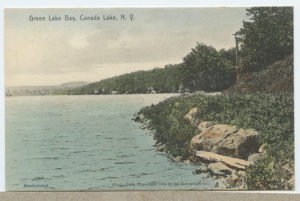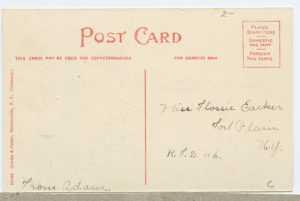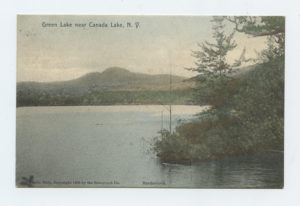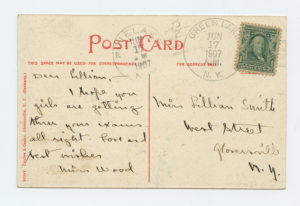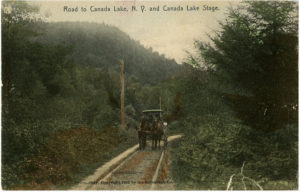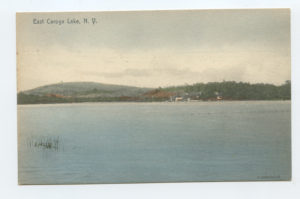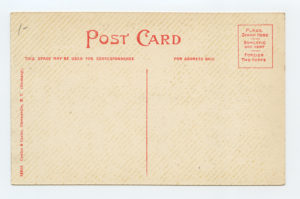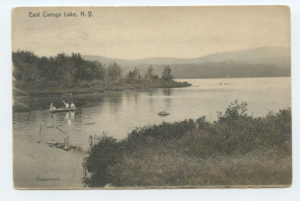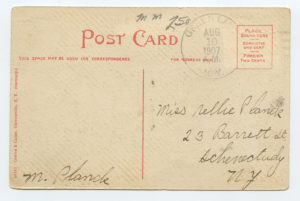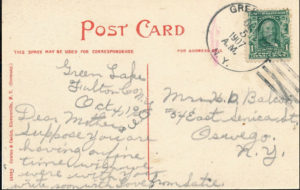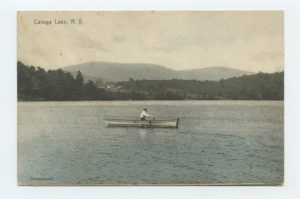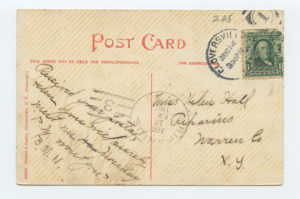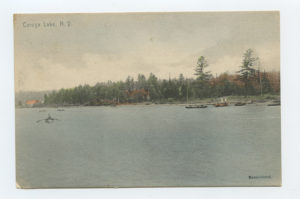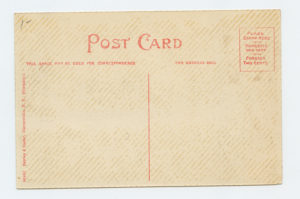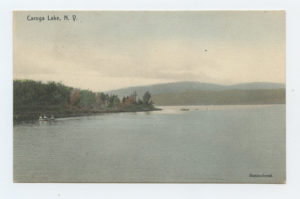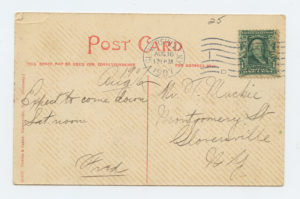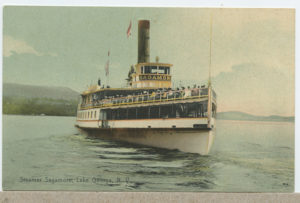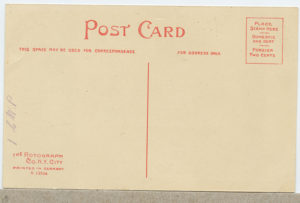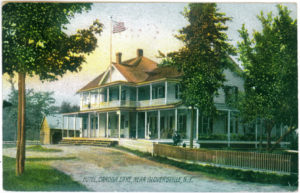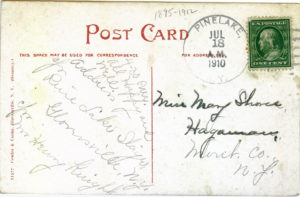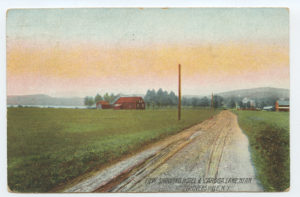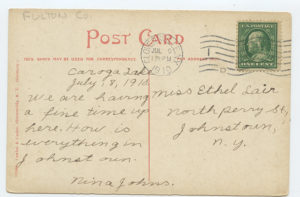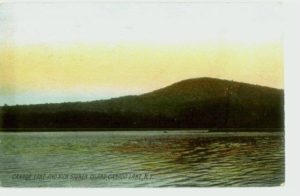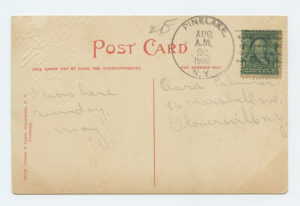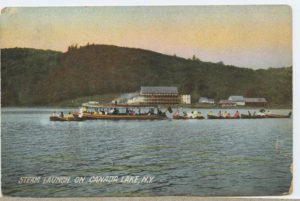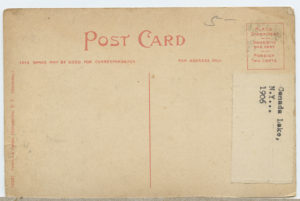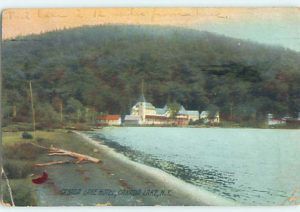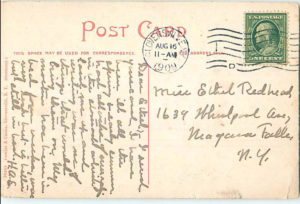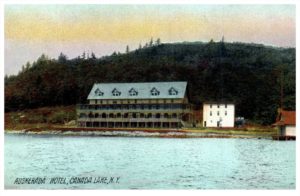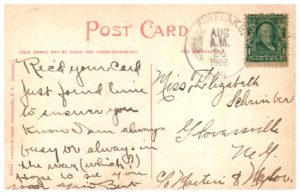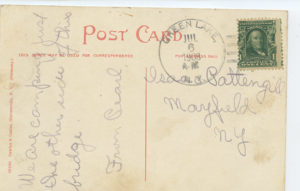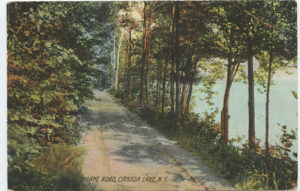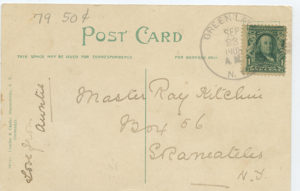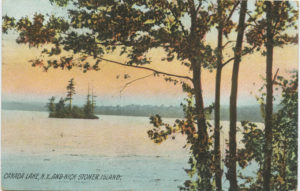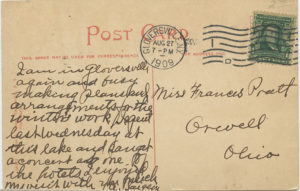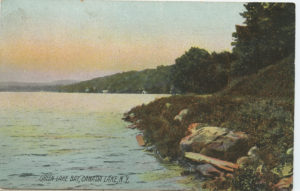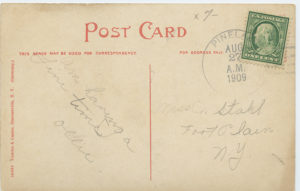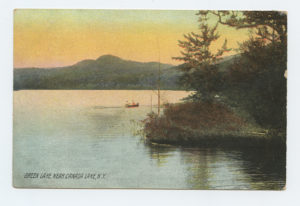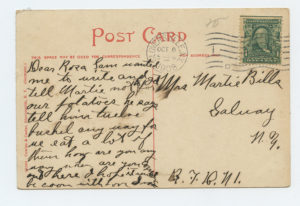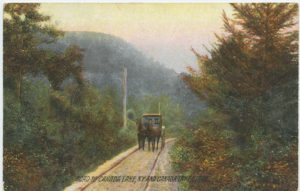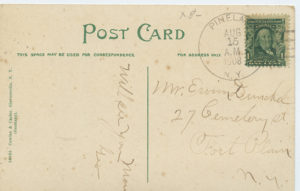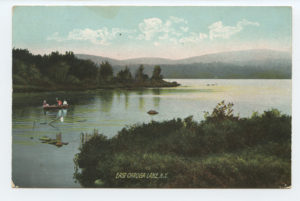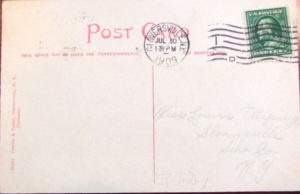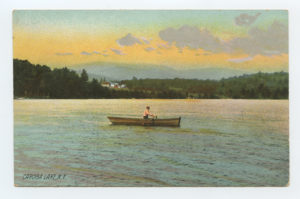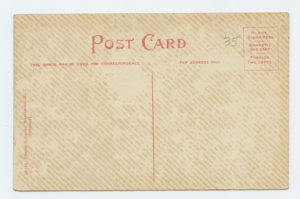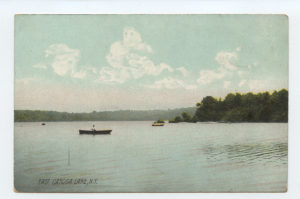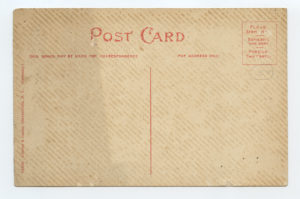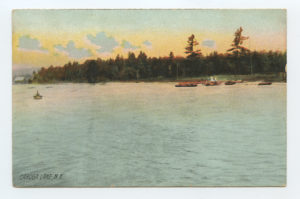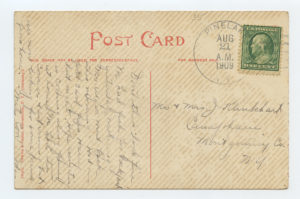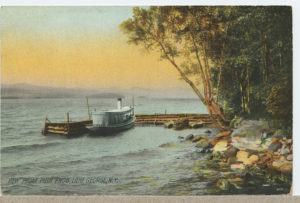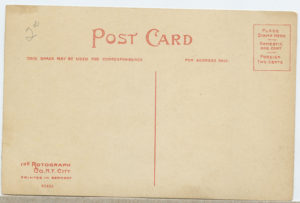The Rotograph Company was a major publisher and printer of postcards from 1904-1911. Based in New York City, the Rotograph Company was an American branch of the German company Neue Photographische Gesellschaft, one of the leading European manufacturers of high quality photographic products including postcards. They were also in partnership with another German printer Knackstedt & Nather of Hamburg. Rotograph had merged with the National Art Views Company in 1904 which gave Rotograph access to an extensive collection of American views. The high quality German printing and extensive inventory of images were central to Rotographs success, as emphasized in their advertisements in stationers trade magazines:
The company when it closed was estimated to have “over two million photographic views from every nook and corner of the United States.” As indicated in the advertisement they were able to produce these images in a range of different styles including: Style A: Black and White, view cards; Style D: Delft, blue finish, marine and landscape view, etc.; Style H, Hand Colored, view cards; and Style G: Colored, smooth finish, view cards.
Rotograph prided itself on producing high quality postcards as indicated in the following statement:
While the market is being flooded with all sorts and conditions of cheap and trashy souvenir post cards, the Rotograph Company continues to uphold the high standard of excellence which they have set for themselves, and seem bent on making the “Post Cards of Quality” a household name wherever mail is delivered and art is appreciated.
The majority of the Rotograph cards are collotypes, a printing technique invented by Alphone-Louis Poitevin in 1855. The technical aspects are beyond the scope of this discussion (for this see the Getty study), but the results produced extremely fine detail and subtle transitions in color and light and shadow as shown in this card entitled “Lake Road, Canada Lake, N.Y.” It required highly skilled printers and the process was only capable of relatively short print runs.
Rotograph retained proprietary rights to many of its images, but the company also made postcards from photographs supplied by clients. Rotograph would send to local businesses like drug stores or stationery shops sample cards like this one for a Style H card:
The local business would act as the publisher while Rotograph would be the printer. This business model provides a context for understanding the Canada Lake and Caroga Lake cards.
The Gloversville stationer of Cowles & Casler collaborated with Rotograph to produce cards of the Fulton county region including Sacandaga, Broadalbin, Johnstown, Gloversville, as well as scenes of Canada and Caroga Lakes. In 1870 Daniel Forbes Cowles along with his father-in-law, John J. Hill, founded the firm. In 1889 Seymour A. Casler, who had been employed at the store since its opening, was admitted to partnership and the name was changed to Cowles, Hill, and Co. After the retirement of Mr. Hill in 1894, the business continued under the name Cowles and Casler. The store would later become Cowles, Brown and Co.
Daniel Forbes Cowles was very active in the business community of Gloversville. In 1890 he was one of the managers of the Gloversville board of trade. In 1891 he was elected as a director of the Manufacturers and Merchant’s Bank. He was treasurer of the Gloversville Street Electric Railroad. He was active in the creation of the Gloversville Free Library. A biographical sketch of him presents the following description:
As a merchant Mr. Cowles was eminently successful, possessing to a marked degree all those characteristics that make for true success in mercantile affairs. Honest and upright in all his dealings, he was kindly and courteous in his treatment of all with whom he came in contact. He was a man upon whom one could depend, and his neighbors soon came to recognize him as such. In the store he believed in having stock and fixtures arranged as tastefully as possible as well as insisting that the goods he handled should always be just as he represented them to be. As a result the store at 9 Main street came to be one of the finest of its kind in the State, while the standing of the firm was among the best.
The store at 9 North Main Street in Gloversville specialized in books and a range of paper products, especially wall paper. Cowles made regular business trips to New York City to make sure his merchandise was up to date. Even before his association with Rotograph, Cowles & Casler published postcards to meet the rising demand for view cards. Two early cards with Canada Lake views bear the name Cowles & Casler in the lower right corner of the image:
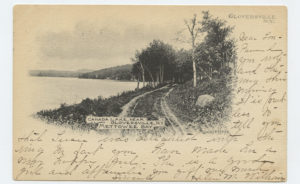
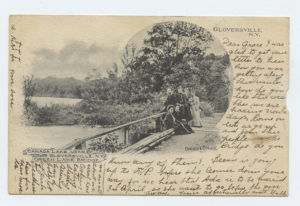 While Cowles & Casler published a range of Fulton County scenes, particular attention was paid to Canada Lake views. D.F. Cowles was a summer resident of Canada Lake. The September 8, 1894 issue of the Johnstown Daily Republican records that his wife, Sarah H. Cowles, bought a lot in Caroga from Aaron Simmons for $750. This can be identified with property now owned by the Corr family along what is now Kasson Drive. Cowles was active in the East Canada Lake Protective Association. Suggestive of his interest in the beauty of the Canada Lake landscape and the type of views found in the postcards, he gave a talk entitled “Canada Lake and American Scenery” at the annual banquet of the ECLPA in February of 1896.
While Cowles & Casler published a range of Fulton County scenes, particular attention was paid to Canada Lake views. D.F. Cowles was a summer resident of Canada Lake. The September 8, 1894 issue of the Johnstown Daily Republican records that his wife, Sarah H. Cowles, bought a lot in Caroga from Aaron Simmons for $750. This can be identified with property now owned by the Corr family along what is now Kasson Drive. Cowles was active in the East Canada Lake Protective Association. Suggestive of his interest in the beauty of the Canada Lake landscape and the type of views found in the postcards, he gave a talk entitled “Canada Lake and American Scenery” at the annual banquet of the ECLPA in February of 1896.
In 1905 there appeared two series of eight views of Canada Lake scenes [the attached table charts the history of the Rotograph and Cowles & Casler cards]. All the cards of both series state that Rotograph is the copyright holder below the image and on the back Rotograph is identified as the publisher with the Rotograph seal appearing in the bottom left corner. The first series is identifiable as Style A , black and white images. The cards bear the production numbers: 4321-4328.
That same year Style H, handcolored cards of the same views were issued. For a number of these cards a different production number was used from the corresponding Style A card, but the production number continues consecutively from the Style A series: 4329-4334. The postmarks of these cards confirm they were produced in 1905.
At least four of these cards were reissued as Style D cards, with the Delft grayish blue coloration. The production numbers for these cards are consistent with the two other series. Rotograph is identifed as the publisher along with its seal on the back. The copyright notice on the back of the cards dates this series to 1906.
The first indication of Cowles & Casler publishing cards printed by Rotogaph is in a series of probably six Style H, Caroga Lake cards, that were likely published in 1906 based on postmark evidence. These cards bear consecutive production numbers from 11575-11580 (we are missing 11578 in this 1906 series). These have all the characteristics of Rotograph products, but they identify Cowles & Casler as the publisher on the back of the cards. Unlike the Canada Lake cards, they do not identify Rotograph as the copyright holder. So it seems likely that Cowles & Casler submitted photographs for Rotograph to print.
1907 was an important year in the post card industry. In March of that year postal regulations allowed makers to divide the backs with the message on the left and the address on the right. All of the Canada Lake and Caroga Lake cards were reissued in 1907 with Cowles & Casler identified as the publisher. For the Canada Lake cards the original Rotograph production numbers were replaced by a new series probably linked with Cowles & Casler. The original eight Canada Lake cards include on their fronts the following notice: “Photo Only,Copyright by Rotograph Co.” The eight Canada Lake cards were supplemented with five additional cards showing a steamer ride down the lake and six additional Caroga Lake cards. While the production numbers in the earlier cards treated Canada Lake and Caroga Lake separately, the production numbers (56383-56402) include cards for both lakes as a complete series.
Probably in 1908 based on postmark evidence, Cowles & Casler published a new version of cards. These can be identified as Rotograph’s Style E cards. The major difference was that these were halftone prints (see Getty study) as opposed to collotypes. A comparison of details of a Style H and a Style E cards shows the major difference with the gridwork dot pattern characteristic of halftone printing evident in the Style E cards.
The high quality of the Rotograph cards was dependent on the expertise of German printers so the introduction of a tariff on the import of cards printed in Germany in 1909 was devastating to the Rotograph Company. The following announcement appeared in Geyer’s Stationer in 1911:
The Rotograph Co., well and favorably known to every dealer as makers of “Post Cards of Quality” have recently been absorbed by the Illustrated Postal Card & Novelty Co., 520-524 West Forty-eighth street, New York, whose plant is now said to be the largest one in the United States devoted exclusively to the manufacture of postcards. They employ 500 people. The factory is equipped with special postcard machinery of every description, and operated by German experts in the line. Their product is therefore of the highest order, and can be delivered in quick time, and at a low price. Among the assets obtained from the Rotograph Co. is the largest collection of real photographs in the world, comprising thousands of art subjects, old masters, life models and over two million photographic views from every nook and corner of the United States. The Illustrated Postal Card & Novelty Co. have just finished classifying this immense collection, and are putting the photo views at the free disposal of their customers who place view card orders. This latter inducement, no doubt, ought to bring them large view orders.
The expected success of the Illustrated Postal Card & Novelty Co. did not come to fruition. The only Canada and Caroga Lake Rotograph cards that were reissued is the series of five cards showing a steamer ride on Canada Lake and some select Caroga Lake cards. For all of these cards, it appears that Cowles & Casler had proprietary rights. None of the original eight Rotographs of Canada Lake were reissued. The publisher of these cards is unknown, and the halftone printing is clearly not up to the standards established by the Rotograph cards. The Rotograph is on top and the later card is on the bottom. The postmark evidence suggests a date of 1911 for this later version.
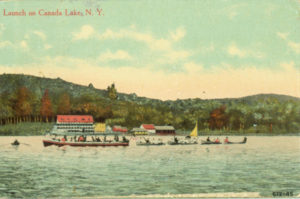
While the 1909 tariffs led to the demise of many of the postcard companies that depended on German printers, American printers began to come to the fore., most notably the Curt Teich company from Chicago. The majority of the cards dedicated to scenes from Canada and Caroga Lakes from 1910 to the 1940s were Teich products.
See table charting the Rotograph and Cowles & Casler cards.
Internet Sources:
For the collotype process see: Dusan C. Stulik and Art Kaplan, Collotype, the Getty Conservation Institute.
For the halftone process see: Dusan C. Stulik and Art Kaplan, Halftone, Getty Conservation Institute.
